Human Methylcellulose Base Media Summary
For the growth and differentiation of human hematopoietic stem cells.
Key Benefits
- Can be supplemented with user-defined cytokines and growth factors
- Excellent optical clarity facilitates colony identification
- High lot-to-lot consistency decreases variation
Why is it Important to Verify Hematopoietic Progenitor Cell Identity using Established Markers?
Colony forming cell (CFC) assays, which are used to enumerate and quantify multi-potent and single lineage hematopoietic progenitors, can be time consuming and laborious.
Successful growth and enumeration of cell colonies is dependent on factors such as accurate cell counts, the presence of growth factors and/or cytokines, adequate humidity, and the use of high quality media. R&D Systems offers Human Methylcellulose Base Media with superior optical clarity to support optimal colony growth, enumeration, and identification. The Human Methylcellulose Base Media contains components that have been optimized for CFC assays. Individual researchers can customize the media by adding cells and other culture supplements tailored to their specific research. This product can also be used in the long-term culture-initiating cell (LTC-IC) assay.
R&D Systems Human Methylcellulose Base Media:
- Optical clarity facilitates colony identification.
- High lot-to-lot consistency decreases variation.
- Supports reproducible in vitro growth of hematopoietic stem and progenitor cells.
- Can be supplemented with user-defined cytokines and growth factors.
- Increased cloning efficiency and improved colony growth compared to agar.
- 90 mL of Human Methylcellulose Base Media and 15 mL of Cell Resuspension Solution.
| Contents | Concentration (when diluted to a final volume of 100 mL) |
| Methylcellulose (1500 cps) in Iscove’s Modified Dulbecco's Medium |
1.4% |
| Fetal Bovine Serum | 25% |
| Bovine Serum Albumin | 2% |
| L-Glutamine | 2 mM |
| 2-Mercaptoethanol | 5 x 10-5 M |
Cell Resuspension Solution (15 mL)
| Contents | Concentration |
| Fetal Bovine Serum in Iscove’s Modified Dulbecco’s Medium |
50% |
Stability and Storage
Human Methylcellulose Base Media and the Cell Resuspension Solution should be stored at ≤-20 °C upon receipt. Storage at 2 °C to 8 °C is not recommended.
Precautions
The acute and chronic effects of overexposure to this media are unknown. Safe laboratory procedures should be followed and protective clothing should be worn when handling this media.
Limitations
- The safety and efficacy of this product in diagnostic or other clinical uses has not been established.
- The reagent should not be used beyond the expiration date indicated on the label.
- The media is optimized to assay human hematopoietic progenitors and is ineffective with mouse hematopoietic progenitors.
- Derivation of human hematopoietic progenitors from different individuals may cause results to vary.
Human Methylcellulose Stock and Base Media
| Catalog # | Product Description | Volume | Colonies Selected for | Contains Serum | Cytokines Included |
| HSC001 | Methylcellulose Stock Solution | 100 mL | N/A* | No | None |
| HSC002 | Human Methylcellulose Base Media |
90 mL | N/A* | Yes | None |
| HSC011 | StemXVivo® Methylcellulose Concentrate |
50 mL | N/A* | No | None |
Complete Human Methylcellulose Media
| Catalog # | Product Description | Volume | Colonies Selected for | Contains Serum | Cytokines Included |
| HSC003 | Human Methylcellulose Complete Media | 100 mL | BFU-E CFU-E CFU-G CFU-GEMM CFU-GM CFU-M |
Yes | Epo GM-CSF IL-3 SCF |
| HSC004 | Human Methylcellulose Complete Media without Epo | 100 mL | CFU-G CFU-GM CFU-M |
Yes | SCF GM-CSF IL-3 |
| HSC005 | Human Methylcellulose Enriched Media |
100 mL | BFU-E CFU-E CFU-G CFU-GEMM CFU-GM CFU-M |
Yes | Epo G-CSF GM-CSF IL-3 IL-6 SCF |
| HSC005SF | Human Methylcellulose Serum-Free Enriched Media |
100 mL | BFU-E CFU-E CFU-G CFU-GEMM CFU-GM CFU-M |
No | Epo G-CSF GM-CSF IL-3 IL-6 SCF |
*Base media and stock solutions do not contain cytokines and will not support colony growth unless conditioned media, cytokines, or other culture supplements are added.
Specifications
Product Datasheets
Scientific Data
 View Larger
View Larger
Human Hematopoietic Colony Formation Using the Methylcellulose-based Colony Forming Cell Assay. Colony forming unit-erythroid (CFU-E) are clonogenic progenitors that produce only one or two clusters with each cluster containing from 8 to approximately 100 hemoglobinized erythroblasts. It represents the more mature erythroid progenitors that have less proliferative capacity.B. Colony forming unit-granulocyte (CFU-G) are clonogenic progenitors of granulocytes that give rise to a homogeneous population of eosinophils, basophils, or neutrophils.C. Colony forming unit-granulocyte, macrophage (CFU-GM) are progenitors that give rise to colonies containing a heterogeneous population of macrophages and granulocytes. The morphology is similar to the CFU-M and CFU-G descriptions.D. Burst forming unit-erythroid (BFU-E) colonies can be described as small (3 to 8 clusters), intermediate (9 to 16 clusters), or large (more than 16 clusters) according to the number of clusters present. These are primitive erythroid progenitors that have high proliferative capacity.E. Colony forming unit-macrophage (CFU-M) are clonogenic progenitors of macrophages that give rise to a homogenous population of macrophages.F. Colony forming unit-granulocyte, erythrocyte, macrophage, megakaryocyte (CFU-GEMM) are multi-lineage progenitors that give rise to erythroid, granulocyte, macrophage and megakaryocyte lineages, as the name indicates.
Assay Procedure
Refer to the product datasheet for complete product details.
Briefly, Human Methylcellulose Base Media is used in the Colony Forming Cell Assay using the following procedure:
- Prepare human mononuclear cells
- Add cells and desired supplements to Human Methylcellulose Base Media
- Plate and incubate cells
- Identify and count colonies
Reagents supplied in the Human Methylcellulose Base Media (Catalog # HSC002):
- 90 mL of Human Methylcellulose Base Media and 15 mL of Cell Resuspension Solution.
| Contents | Concentration (when diluted to a final volume of 100 mL) |
| Methylcellulose (1500 cps) in Iscove’s Modified Dulbecco's Medium |
1.4% |
| Fetal Bovine Serum | 25% |
| Bovine Serum Albumin | 2% |
| L-Glutamine | 2 mM |
| 2-Mercaptoethanol | 5 x 10-5 M |
Cell Resuspension Solution (15 mL)
| Contents | Concentration |
| Fetal Bovine Serum in Iscove’s Modified Dulbecco’s Medium |
50% |
Reagents
- Cells derived from bone marrow, blood, or enriched CD34+ cells
- Iscove's Modified Dulbecco's Media (IMDM)
- Ca2+/Mg2+-free Hank's Balanced Salt Solution (HBSS)
- Ficoll-Paque™ PLUS (GE Healthcare) or equivalent
Materials
- 35 mm culture plates
- 15 mL centrifuge tubes
- 50 mL centrifuge tubes
- 10 mL syringes
- 3 mL syringes
- 5 mL vials
- 16 gauge 1½ inch needle
- 14 gauge laboratory pipetting needle
- Heparinized syringes or Vacutainers®
- Serological pipettes
- Pipettes and pipette tips
Equipment
- 37 °C and CO2 humidified incubator
- Centrifuge
- Vortex mixer
- Hemocytometer
- Inverted Microscope
Prepare mononuclear cells by Ficoll-Paque gradient centrifugation.
Wash the cells two times with HBSS and pool the cells.
Centrifuge the cells at 400 x g for 10 minutes.
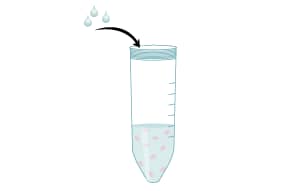
Thaw aliquots of Methylcellulose Stock Solution at room temperature.
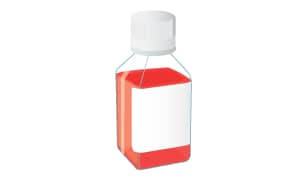
Resuspend mononuclear cells in 10 mL of IMDM.
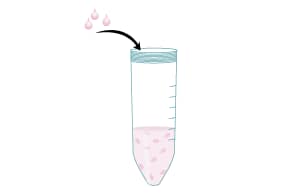
Perform a cell count.

Transfer the appropriate volume of cells plus a slight excess into a new 15 mL centrifuge tube.
Centrifuge at 300 x g for 5 minutes.
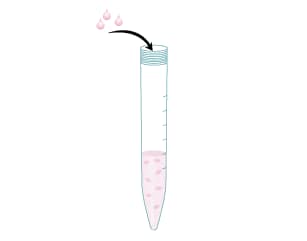
Remove the supernatant.
Resuspend the cells in Cell Resuspension Solution to the desired stock cell number to generate a 10X stock concentration.

Combine the appropriate volume of 10X cell stock with the desired cell culture supplements/cytokines, and Human Methylcellulose Base Media. The final methylcellulose concentration should be 1.27%.

Vortex the samples vigorously.
Wait approximately 20 minutes to allow air bubbles to escape.
Add 1.1 mL of the cell mixture to a 35 mm culture plate using a 3 mL syringe and a 16 gauge needle.
Spread the media evenly by gently rotating the plate.
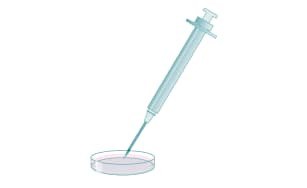
Place two 35 mm plates into a 10 cm plate.
Add one uncovered 35 mm plate that contains 3-4 mL of sterile water.
Cover the 10 cm plate and place it in a 37 °C and 5% CO2 incubator.
Incubate the cells for 14-16 days.
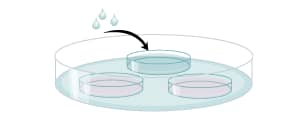
Use an inverted microscope and a scoring grid to identify and count individual colonies.

Citations for Human Methylcellulose Base Media
R&D Systems personnel manually curate a database that contains references using R&D Systems products. The data collected includes not only links to publications in PubMed, but also provides information about sample types, species, and experimental conditions.
15
Citations: Showing 1 - 10
Filter your results:
Filter by:
-
Identification of a c-MYB-directed therapeutic for acute myeloid leukemia
Authors: K Clesham, V Walf-Vorde, L Gasparoli, C Virely, S Cantilena, A Tsakaneli, S Inglott, S Adams, S Samarasing, J Bartram, G Williams, J de Boer, O Williams
Leukemia, 2022-04-02;0(0):. 2022-04-02
-
The P2X4 purinergic receptor has emerged as a potent regulator of hematopoietic stem/progenitor cell mobilization and homing-a novel view of P2X4 and P2X7 receptor interaction in orchestrating stem cell trafficking
Authors: M Adamiak, K Bujko, A Thapa, V Pensato, K Brzezniaki, J Ratajczak, DL Davies, H Ulrich, M Kucia, MZ Ratajczak
Leukemia, 2021-07-20;0(0):. 2021-07-20
-
Therapeutic delivery of siRNA with polymeric carriers to down-regulate STAT5A expression in high-risk B-cell acute lymphoblastic leukemia (B-ALL)
Authors: M Mohseni, C Kucharski, RB K C, M Nasrullah, X Jiang, H Uluda?, J Brandwein
PLoS ONE, 2021-06-22;16(6):e0251719. 2021-06-22
-
Danger-associated molecular pattern molecules take unexpectedly a central stage in Nlrp3 inflammasome-caspase-1-mediated trafficking of hematopoietic stem/progenitor cells
Authors: A Thapa, M Adamiak, K Bujko, J Ratajczak, AK Abdel-Lati, M Kucia, MZ Ratajczak
Leukemia, 2021-02-23;0(0):. 2021-02-23
-
SOX11 promotes epithelial/mesenchymal hybrid state and alters tropism of invasive breast cancer cells
Authors: E Oliemuller, R Newman, SM Tsang, S Foo, G Muirhead, F Noor, S Haider, I Aurrekoetx, MD Vivanco, BA Howard
Elife, 2020-09-10;9(0):. 2020-09-10
-
The novel Isatin analog KS99 targets stemness markers in acute myeloid leukemia
Authors: C Annageldiy, K Gowda, T Patel, P Bhattachar, SF Tan, S Iyer, D Desai, S Dovat, DJ Feith, TP Loughran, S Amin, D Claxton, A Sharma
Haematologica, 2019-05-23;0(0):. 2019-05-23
-
Multiple myeloma cells adapted to long-exposure of hypoxia exhibit stem cell characters with TGF-?/Smad pathway activation
Authors: Y Nakagawa, E Ashihara, H Yao, A Yokota, Y Toda, Y Miura, S Nakata, H Hirai, T Maekawa
Biochem. Biophys. Res. Commun., 2018-01-06;0(0):. 2018-01-06
-
Mobilization studies in mice deficient in sphingosine kinase 2 support a crucial role of the plasma level of sphingosine-1-phosphate in the egress of hematopoietic stem progenitor cells
Authors: M Adamiak, L Chelvaraja, KR Lynch, WL Santos, A Abdel-Lati, MZ Ratajczak
Oncotarget, 2017-07-24;8(39):65588-65600. 2017-07-24
-
Single-cell epigenomic variability reveals functional cancer heterogeneity
Authors: UM Litzenburg, JD Buenrostro, B Wu, Y Shen, NC Sheffield, A Kathiria, WJ Greenleaf, HY Chang
Genome Biol, 2017-01-24;18(1):15. 2017-01-24
-
The DPY30 subunit in SET1/MLL complexes regulates the proliferation and differentiation of hematopoietic progenitor cells.
Authors: Yang Z, Augustin J, Chang C, Hu J, Shah K, Chang C, Townes T, Jiang H
Blood, 2014-08-18;124(13):2025-33. 2014-08-18
-
Bone marrow stem/progenitor cell mobilization in C57BL/6J and BALB/c mice.
Authors: Lee, Hakmo, Che, Jeong-Hw, Oh, Ju Eun, Chung, Sung Soo, Jung, Hye Seun, Park, Kyong So
Lab Anim Res, 2014-03-24;30(1):14-20. 2014-03-24
-
STAT3 mediates oncogenic addiction to TEL-AML1 in t(12;21) acute lymphoblastic leukemia.
Authors: Mangolini M, de Boer J, Walf-Vorderwulbecke V, Pieters R, den Boer M, Williams O
Blood, 2013-06-05;122(4):542-9. 2013-06-05
-
The AAA+ ATPase RUVBL2 is a critical mediator of MLL-AF9 oncogenesis.
Authors: Osaki H, Walf-Vorderwulbecke V, Mangolini M, Zhao L, Horton S, Morrone G, Schuringa J, de Boer J, Williams O
Leukemia, 2013-02-13;27(7):1461-8. 2013-02-13
-
Acellular bone marrow extracts significantly enhance engraftment levels of human hematopoietic stem cells in mouse xeno-transplantation models.
Authors: Zibara K, Hamdan R, Dib L
PLoS ONE, 2012-07-02;7(7):e40140. 2012-07-02
-
Novel insight into stem cell mobilization-plasma sphingosine-1-phosphate is a major chemoattractant that directs the egress of hematopoietic stem progenitor cells from the bone marrow and its level in peripheral blood increases during mobilization due to activation of complement cascade/membrane attack complex.
Authors: Ratajczak MZ, Lee H, Wysoczynski M, Wan W, Marlicz W, Laughlin MJ, Kucia M, Janowska-Wieczorek A, Ratajczak J
Leukemia, 2010-04-01;24(5):976-85. 2010-04-01
FAQs
-
What is the difference between Methylcellulose Stock (Catalog # HSC001) and Base Media (Catalog # HSC002)?
- The Methylcellulose Stock (Catalog # HSC001) contains methylcellulose in Iscove's Modified Dulbecco's Medium. The Base Media (Catalog # HSC002) contains methylcellulose in Iscove's Modified Dulbecco's Medium along with serum, albumin, L-glutamine, and 2-mercaptoethanol. The additional components of HSC002 are needed to sustain the viability and growth of HSCs. The advantage to using HSC002 is that R&D Systems has already evaluated the serum, albumin, L-glutamine, and 2-mercaptoethanol in-house to ensure lot-to-lot consistency, eliminating the need for the researcher to evaluate these components individually.
-
Can the CFU assay using Methycellulose based media be performed using frozen PBMCs instead of fresh PBMCs?
Yes, the CFU assay can be performed using frozen PBMCs. The PBMCs can be frozen in DMEM containing 10% FBS and 10% DMSO.
Reviews for Human Methylcellulose Base Media
There are currently no reviews for this product. Be the first to review Human Methylcellulose Base Media and earn rewards!
Have you used Human Methylcellulose Base Media?
Submit a review and receive an Amazon gift card.
$25/€18/£15/$25CAN/¥75 Yuan/¥2500 Yen for a review with an image
$10/€7/£6/$10 CAD/¥70 Yuan/¥1110 Yen for a review without an image

